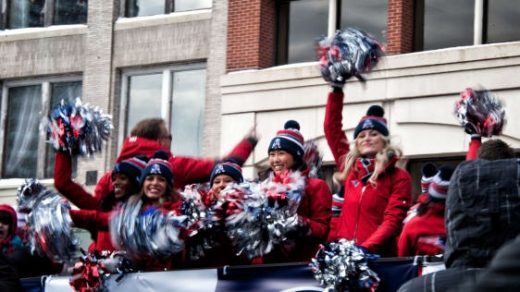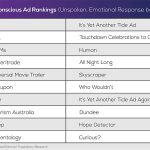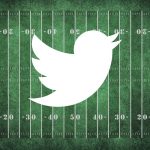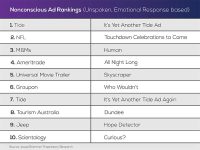NFL Cheerleader Pay: This Super Bowl, Let’s Remember The Ultimate Wage Gap
As the Super Bowl kicks off on Sunday, with its half billion in ad revenue and tickets priced at a minimum of $3,600, let’s take a moment to remember the cheerleaders and how little money they make.
People started paying attention to the issue of cheerleader pay back in 2014, when a cheerleader for the Oakland Raiders filed a lawsuit against the team for wage theft. Four years later, cheerleaders from several teams have won lawsuits awarding them employee status and garnering them back-pay. But even with these small wins, there remains a question over whether cheerleaders are getting their due. Is minimum wage enough when you’re working for an industry as lucrative as professional American football?
“The cheapest NFL ticket to the Super Bowl is $3,000, yet they can’t pay their cheerleaders minimum wage,” says Diane Todd, a mother to a young cheerleader, who launched a widely shared petition on Change.org back in 2014 after finding out how little cheerleaders generally earn.
The issue with cheerleader pay is multifold. For one, while there are some industry trends around both pay and hours worked, it’s far from standardized. Cheerleaders in the NFL appear to be paid a fee in the realm of $100-$125 per game. However, there is little uniformity among teams regarding compensation for additional duties like practices, travel, appearances, and attire upkeep.
Some cheerleaders contend that the current model is fine the way it is. “Every minute we were working, we were paid,” says former New England Patriots cheerleader Michelle Nigro, who last performed in 2015. She says that she and her teammates were paid an hourly wage that was at least the minimum allowed by labor laws for practices, games, and appearances. The Patriots also paid for miles driven beyond their normal commute, she says.
But that doesn’t appear to be the norm. Over the last few years, a number of lawsuits have been filed against various teams–and the NFL itself–for underpaying these part-time workers. The Oakland Raiders paid out a $1.25 million settlement in 2014 and promised to pay at least minimum wage going forward. The Tampa Bay Buccaneers settled a suit with cheerleaders for $825,000 in 2015 and made minimum wage its baseline compensation. The Buffalo Jills, Cincinnati Ben-Gals, and New York Jets cheerleaders have had similar wins. Meanwhile, the Baltimore Ravens preemptively moved its cheerleaders over to slightly above minimum-wage compensation, avoiding possible lawsuits.
However, there’s no indication that the industry is paying minimum wage across the board yet. A 2016 lawsuit accusing the NFL of colluding to keep cheerleader wages artificially low attempted to address the issue broadly, but was ultimately thrown out by judge William Alsup, who said there wasn’t enough evidence to bring a suit.
Not Black And White
Even within cheerleading squads, the debate remains contentious, with some cheerleaders, like Nigro, arguing that women know what they’re getting into when they sign their contracts. She also says that the experience she learned while cheering was worth it for her. Not only did she get to do charitable work and perform in two Super Bowls, but she also connected with a network of successful women. She says the experience taught her professionalism.
The opportunities Nigro cites are similar in quality to what one might absorb through an internship. Like cheerleaders, interns have had to fight legal battles to be paid. The Fair Labor Standards Act has guidelines that an employer must meet in order to get away with not paying interns. Most notably, they must provide valuable career training, and they generally may not require interns to perform the work of employees. So while an internship may be a good opportunity, the FLSA still requires companies to pay workers at least minimum wage–and overtime for longer hours–outside of a training environment. This same law is the basis for recent court victories that have deemed cheerleader pay unacceptably low.
While paying cheerleaders minimum wage should be a fairly cut-and-dried issue, the debate is layered with a variety of other factors, making it a more sociopolitical issue than it might otherwise be.
Consider the optics of mascot pay. A favorite statistic among women lobbying for better cheerleader pay is that mascots have starting salaries of about $25,000, but can earn as much as $100,000. It’s a pretty stark discrepancy and more comparable a job than a football player (who, by the way, gets a sizable bonus just for making it into the Super Bowl, and a seven-figure payout for playing on the winning team).
Another factor muddying the debate is that cheerleading, despite its physical demands, is often not considered a sport. Part of what provoked Todd’s outrage is that her daughter trained as a competitive cheerleader in high school. Women like Todd’s daughter are effectively gymnasts. They flip, they tumble, they fly through the air, performing complex routines. It is an athletic pursuit, one that can actually be quite dangerous. But for whatever reason, it is not classified as a sport by the NCAA.
Some women think the snub is inherently sexist, because cheerleading is such a female-dominated activity. Furthermore, young women who train as cheerleaders don’t have a lot of opportunities to capitalize on their years of practice. A limited number of colleges offer scholarships for cheerleaders. Cheerleading for a sports team is also vastly different from competitive cheering, with the former being more like a dance squad and the latter like group gymnastics. As Nigro noted to me, she can’t even do a cartwheel.
Underpaid Or Just Outdated?
It’s this complex mix of feelings over cheerleading that has people bickering over wages and definitions. A recent Boston Globe editorial questioned the use of having cheerleaders at sporting events at all. “Football’s a hyper violent game with a lousy history of violence against women,” writes Margery Eagan, cohost of Boston Public Radio. “Juxtaposing all that with pom-pom shakers in tight white leather boots, well, it feels wrong, especially now.”
Niro, however, casts aspersions on that point of view. “It seems to belittle,” she says. “Why can’t I wear that outfit? I was in the best shape of my life! I was getting A’s in college. Why can’t I get respected and do that?” She adds that her coach went out of her way to create an environment where she didn’t feel harassed or objectified by onlookers, many of whom, she says, are just trying to get closer to football team members.
For women who want to see cheerleading elevated, there is some hope. Cheerleading was awarded provisional status in the Olympic games in 2016. After three years, cheerleading officials can apply to become a part of the official Olympic game sports program.
But for young cheerleaders who are growing up in an era when women are keenly aware of the ways in which men are more valued for their work, compensation may be a lasting issue. With all the evidence presented to Diane Todd’s daughter, a senior in high school, she decided to remove herself from cheerleading altogether.
“I think overall she enjoyed it, but she burned out,” says Todd. “She got two concussions.”
People may not agree about how cheerleading should be practiced–from the sidelines or as its own athletic event–but the desire to be paid, to be valued for hard work, isn’t likely to wane.
Fast Company , Read Full Story
(83)














